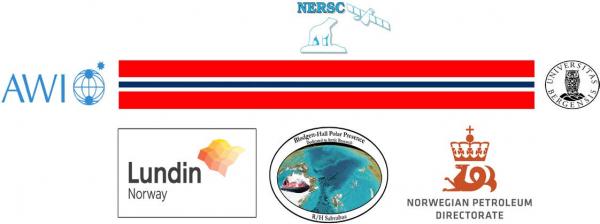
(18 - 25 May 2015)
Ice drift
The ice camp moved 15 nautical miles (28 km) during week 38 (Fig. 1). Winds have been from the northwest for most part of the week except Wednesday (southwest) and Saturday (northeast). The exceptions were due to incursions of low surface air pressure from the Svalbard area. The change in wind direction on Saturday forced the ice to drift to the west for about half a day. Faster ice drift (0.3 knot) at the end of the week was driven by a low pressure which extended from Svalbard to the North Pole.

Fig. 1. The drift of FRAM-2014/15 during week 38, 18 - 25 May 2015 (heavy red line).
Sea ice dynamics
No ice activity has been observed in our neighborhood during the week. The satellite image from 23 May in Fig. 2 shows the large scale fracture pattern northeast of Greenland. The main shear zone off the coast is very prominent and extends far to the northwest. The ice flow accelerates dramatically south of the latitude of Station Nord, but the total volume of ice flowing out has a minimum during the early summer (May and June).
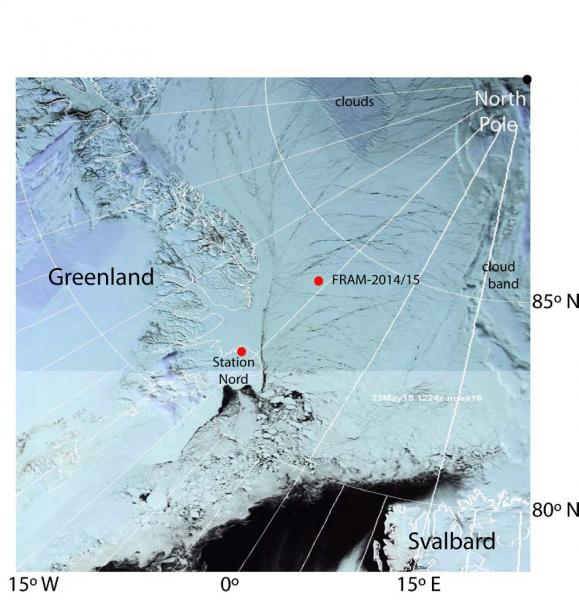
Fig. 2 Satellite image from 23 May courtesy of www.woksat. info showing ice distribution and fracture patterns north of Greenland and Svalbard.
Camp life
The loss of several oceanographic instruments and their stored time series of currents and temperature during the winter, has bothered us a lot. But the cold and the darkness and lack of subsequent ice activity made us wait until the spring to make an all out search effort. This week has been devoted to a final search for the missing current meter (800 m depth), the acoustic Doppler current profiler (ADCP), and the 300 meter long thermistor string. As explained in the Science section below, there are some bad news and some good news.
Temperatures have been between -7 °C and -14 °C this week and for most of the time, we have had beautiful weather. Surface air pressure gradients have been small and winds weak. Working outside is a real pleasure - the kind of weather you would hope for you dream Easter vacation in the
mountains. The snow surface is for the most part hard and uneven, small and large drift deposits. The effect of the sun and incipient melting helps to seal off pores and make hovercraft driving easier. Small snow banks on either side of the entrance to the hovercraft parking, guide the craft to its exact parking location. The ideal case for an expedition like this would be to enter your target area and be able to carry out your work during the finest moments the beautiful polar desert can offer. The rest of the year, you may go into hibernation surrounded by a maze of data loggers.
We have received a generous offer from the Danish Arctic Command in Greenland for an air drop on May 27, if needed. This could be carried out in connection with their scheduled surveillance flight of the Exclusive Economic Zone. Spare radiator parts on hold in Bergen, can now be available as well as more antifreeze fluid. On April 15, four days after the air drop from the 333 Squadron, we got a leak between the two radiator sections and our anti freeze supply became rapidly depleted. Temporary repair stopped the leak and our hope was that this would hold up until the end of the expedition.
Science
Underway continuous measurements:
Bathymetry and sub-bottom profiling:
- one autonomous echo sounder buoy reporting to shore via Iridium
Oceanography:
- 50 kHz and 200 kHz echo sounders to look for scattering layers in the upper 200 meter.
Atmosphere:
- measurement of incoming and outgoing radiation from the ice surface
- surface infrared skin temperature
- sun time
- Aanderaa weather station
Station work
- 3 CTD casts to 1000 meter depth
- One 12 hour time-lapse of 50 kHz and 200 kHz echo sounder display
We have resumed making CTD casts as stated in the previous report.
Our approach in search for the lost equipment has been to drill 15 cm diameter access holes and lower an underwater camera (Fig. 3 and 4). The under-ice light conditions permitted target definition out to 10-15 meter. The ice activity which disrupted the camp and the mooring sites took place in late November. We monitored the subsequent surface expression of ice activity continuously, and made the first under-ice search in the dark 11-12 February. The ADCP site had been hit by under-thrusted ice and the wire most likely sheared off. At the current meter site, we could see the kevlar line coming out of the underside of the ice at an angle, but deferred recovery because of the cold and the dark. This turned out to be a fatal mistake. Working conditions were better now in late May, but there were no sign of the kevlar line - it must have been torn off and the line with the current meter at the end were lost.
We then turned to the thermistor string. The mooring site was separated from the camp by a shear zone during the last week of March and displaced c. 150 meter. A nearby stake to mark the path between the old and the new camp, gave us a clue about its location. We had searched for the surface expression of the mooring several times, but with no success. From the first access hole, we could see a faint linear object, and after four holes were made, we had cross-bearings to the nearest half meter (Fig. 4). The thermistor string has 4 months of temperature data recorded for every 10 meter depth down to 300 meter. Final recovery will be next week. To us, locating the string was a major victory.
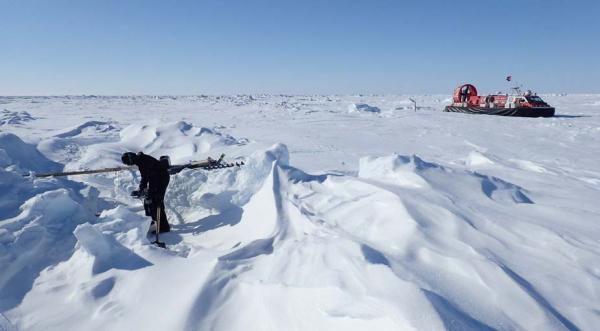
Fig. 3 Drilling access holes in search for the thermistor string
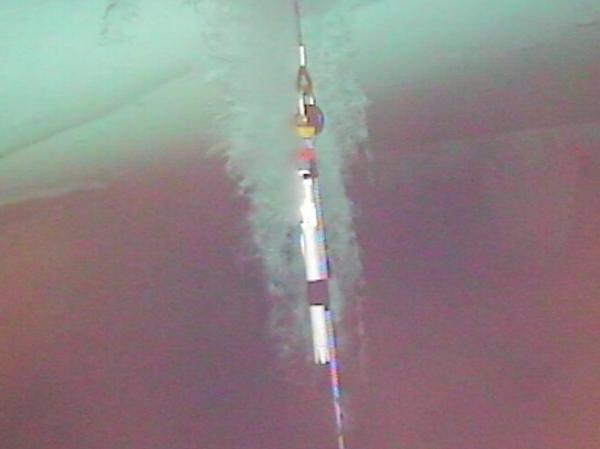
Fig. 4 View from an access hole of the first thermistor in its position just below the underside of the ice.
Wild life
The High Arctic is coming alive. We had visits by the first snow bunting on 10 May, and the second one came on 20 May (Fig. 5). An Ivory gull came over the camp on 18 May and Audun saw another two on a ski trip 20 May.
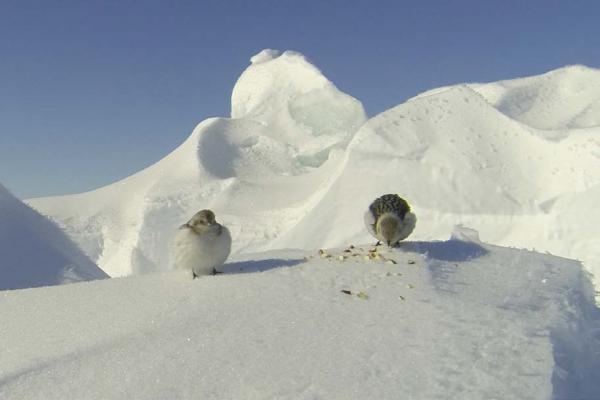
Fig. 5 Audun has captured the two snow buntings having a meal together
Life in the High Arctic is treating us well.
Yngve Kristoffersen & Audun Tholfsen
Daily reports
Monday 18 May
Position: 84° 01.5' N, 16° 40' W, temperature - 8° C, 1014 hPa, wind 3 knots from the SW. Ice drift 0.2 towards SE. Put up a 12 hour time-lapse of the echo sounder screen. Checked the radiation flux instrument. Removed the cover and insulation mats from the hovercraft superstructure, and mobilized the craft for departure. Just after getting off the parking ramp a loud rattling noise was heard. The starboard brace which hold the propeller duct had come loose and the threads of the adjusting eye-bolt had been pulled out. Propeller blades were hitting the duct at the top inside. We had no spares, but could do satisfactory repair using parts from our unofficial "nice -to-have" collection. We made two trips over to the old camp and moved all equipment and all remaining fuel over to the present camp. The visibility went down so we stayed overnight at the old camp site. We saw an Ivory gull over the camp for the first time this year.
Tuesday 19 May
Position: 83° 58.2' N, 16° 37' W, temperature - 14° C, 1016 hPa, wind 15 knot knots from the NW. Ice drift 0.3 knot towards the S. The camera was lowered to 22 meter. The field of view was straight downwards, but did not capture any life in the two hours of recording. Made a CTD cast down to 1000 meter depth.
Wednesday 20 May
Position: 83° 52.7' N, 16° 25' W, temperature - 11° C, 1021 hPa, wind 11 knots from the SW. Ice drift 0.2 knots to the SE. Beautiful weather all day, but reduced visibility in the late evening. Made a CTD cast down to 1000 meter. Audun made a ski trip and recovered bathymetry buoy #1 from 4.3 km out. He also spotted two Ivory gulls on the way. Washed part of the superstructure that had deposits from the stove pipe accumulated through the winter. Also cleaned the deck around the compressor. Snow bunting number two for the season landed near the hovercraft and later inspected the place where our garbage is burnt.
Thursday 21 May
Position: 83° 51.7' N, 16° 14.4' W, temperature - 11° C, air pressure 1019 hPa, wind 4 knots from the NW. Clear sky - a beautiful day. Ice drift 0.1 knot towards the SE. We loaded the hovercraft and drove over to the current meter mooring. Drilled all together five holes and inspected the underside of the ice with the underwater camera. Much to our surprise, there was no trace of the kevlar line coming out of the ice. Returned to camp.
Friday 22 May
Position: 83° 50.9' N, 16° 06' W, temperature - 7° C, pressure 1019 hPa, wind 5 knots from the NW. Drove over to the current meter site and continued the search. The current meter suspended at 800 meter depth is lost. Moved over to the ADCP mooring. Drilled a hole 7 meter from the mooring, but did not reach through. Made it through 2 m. thick ice 10 meter away. Lowered the camera, but no sign of an instrument. This is in a pressure ridge and even if we could spot the ADCP, we probably would not have been able to recover it. Moved the last
fuel back to our camp. We received an e-mail from Danish Arctic Command with a generous offer of an air drop if needed on Wednesday May 27. We gratefully accepted and spare parts were shipped from Bergen to Søndre Strømfjord on the shortest notice. This enables us to get spares for the radiator and extra antifreeze and the temporary repair will no longer be a gamble. An extra four kilos of oatmeal and two kilos of onions were deleted from the list due to import restrictions in Greenland.
Saturday 23 May
Position: 83° 50.0' N, 16° 12' W, temperature - 13° C, air pressure 1005 hPa, wind 12 knots from the ESE. A beautiful day. Replaced the full data storage on the weather station. The display on the replacement cartridge is blurred and unreadable. Battery voltage was 7.35 volt. Added two D-cells to get 10.3 volt out. Drove the hovercraft to the location of the displaced thermistor string. The mooring was separated from camp by a shear zone only a meter or two away and displaced over 150 meter to the east. From the first hole drilled, we could barely see something with the underwater camera that might be the string. After four holes, we had cross bearings and good photo documentation of an intact string. Recovery will be next week. Our remaining fuel is 1700 liter diesel, 2 drums of Jet A-1, and 1 drum of gasoline.
Sunday 24 May
Position: 83° 47.7' N, 16° 08' W, , temperature - 12° C, air pressure 1013 hPa, wind 13 knots from the WSW. Ice drift 0.3 knot to the SE. Poor visibility in the morning, but clear sky most of the day. Made a CTD cast down to 1000 meter.
